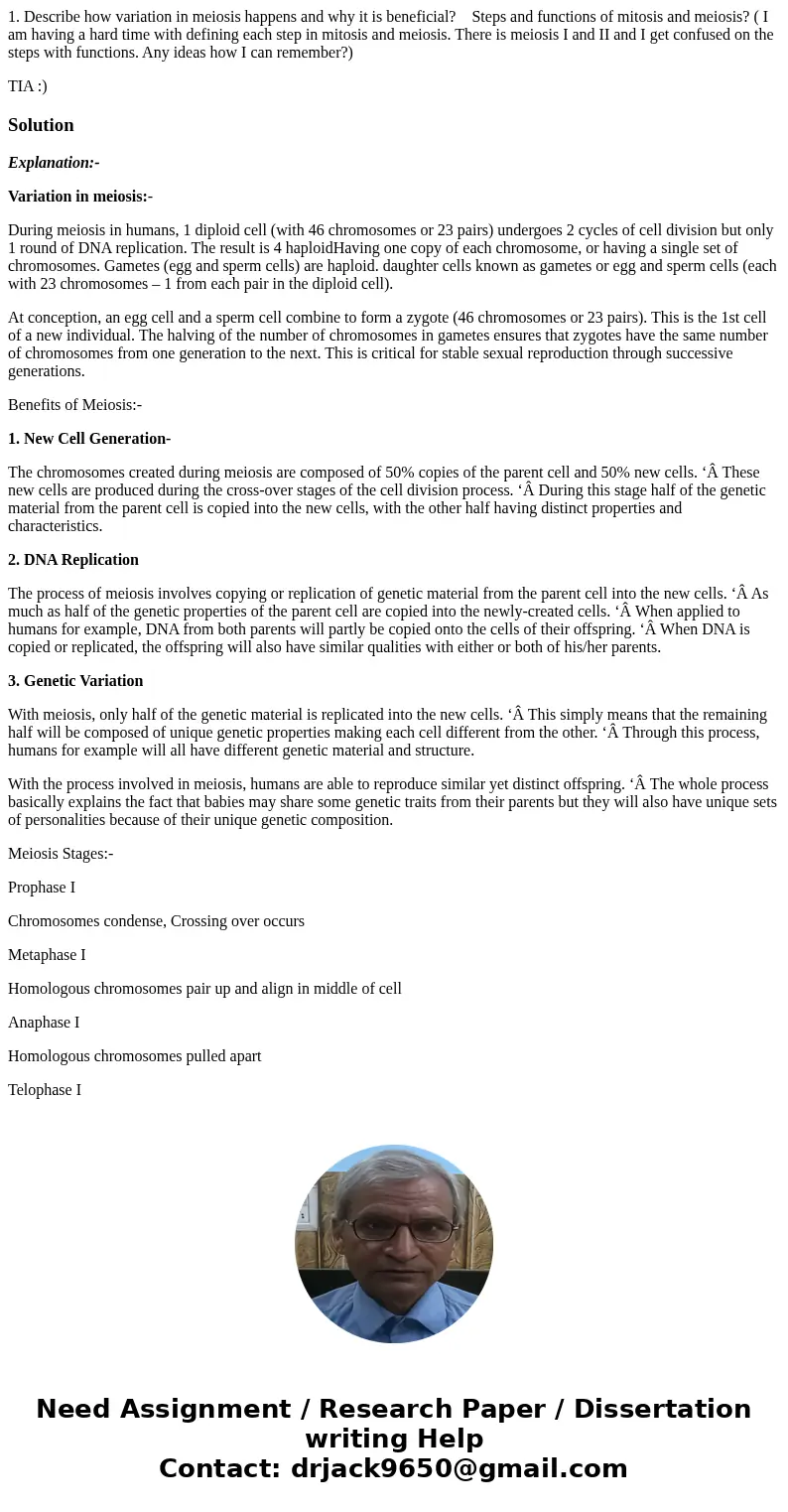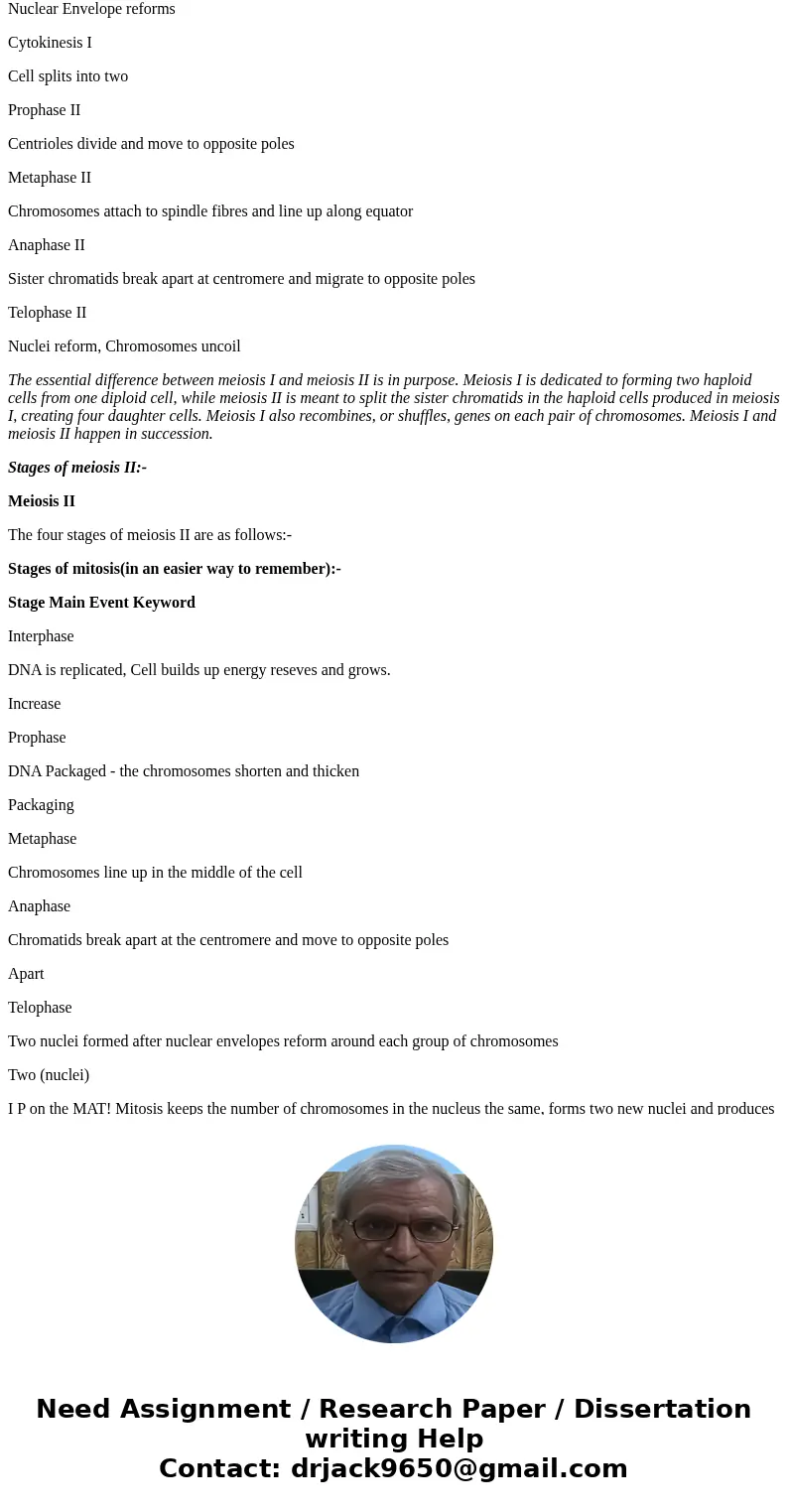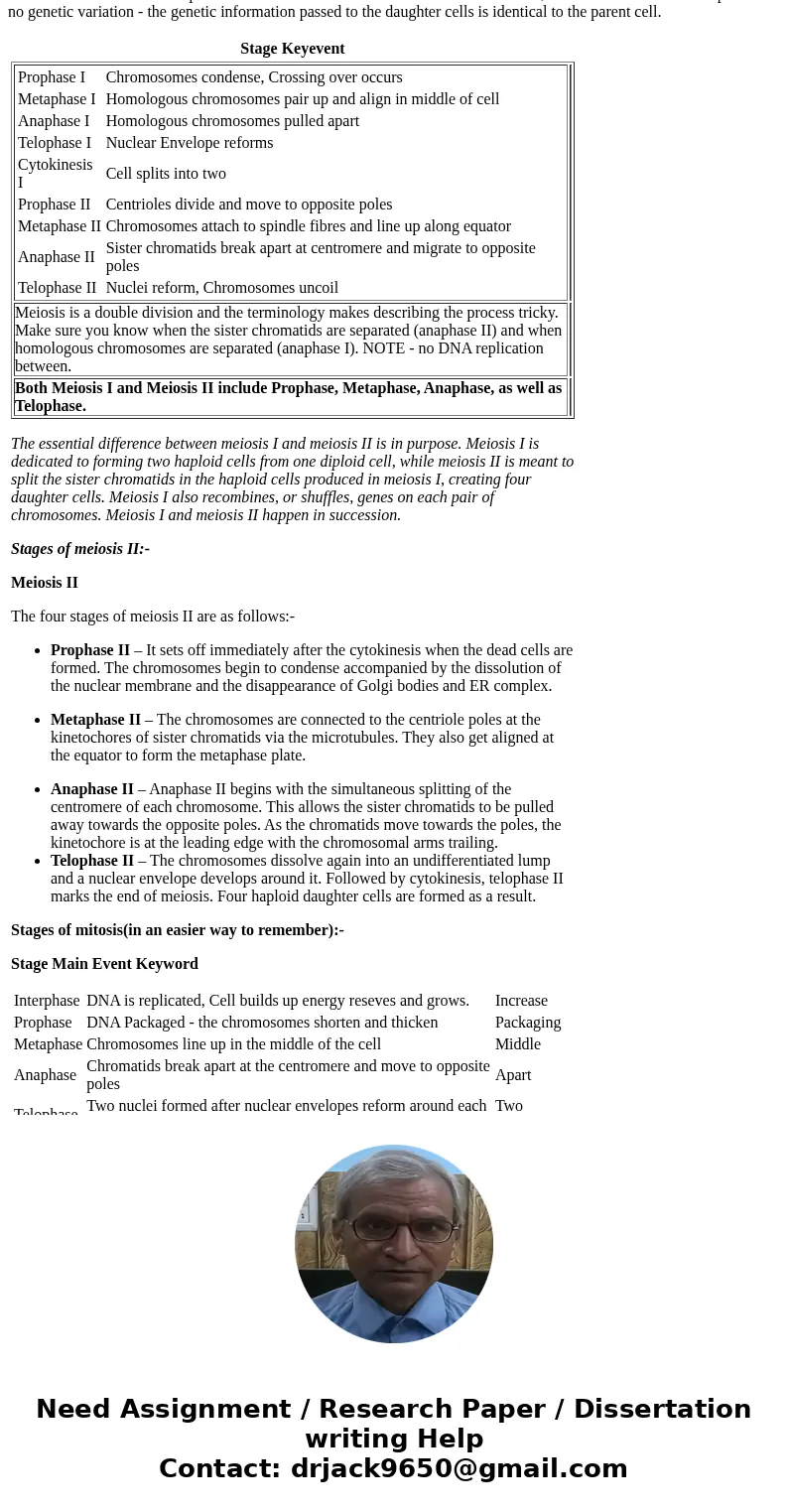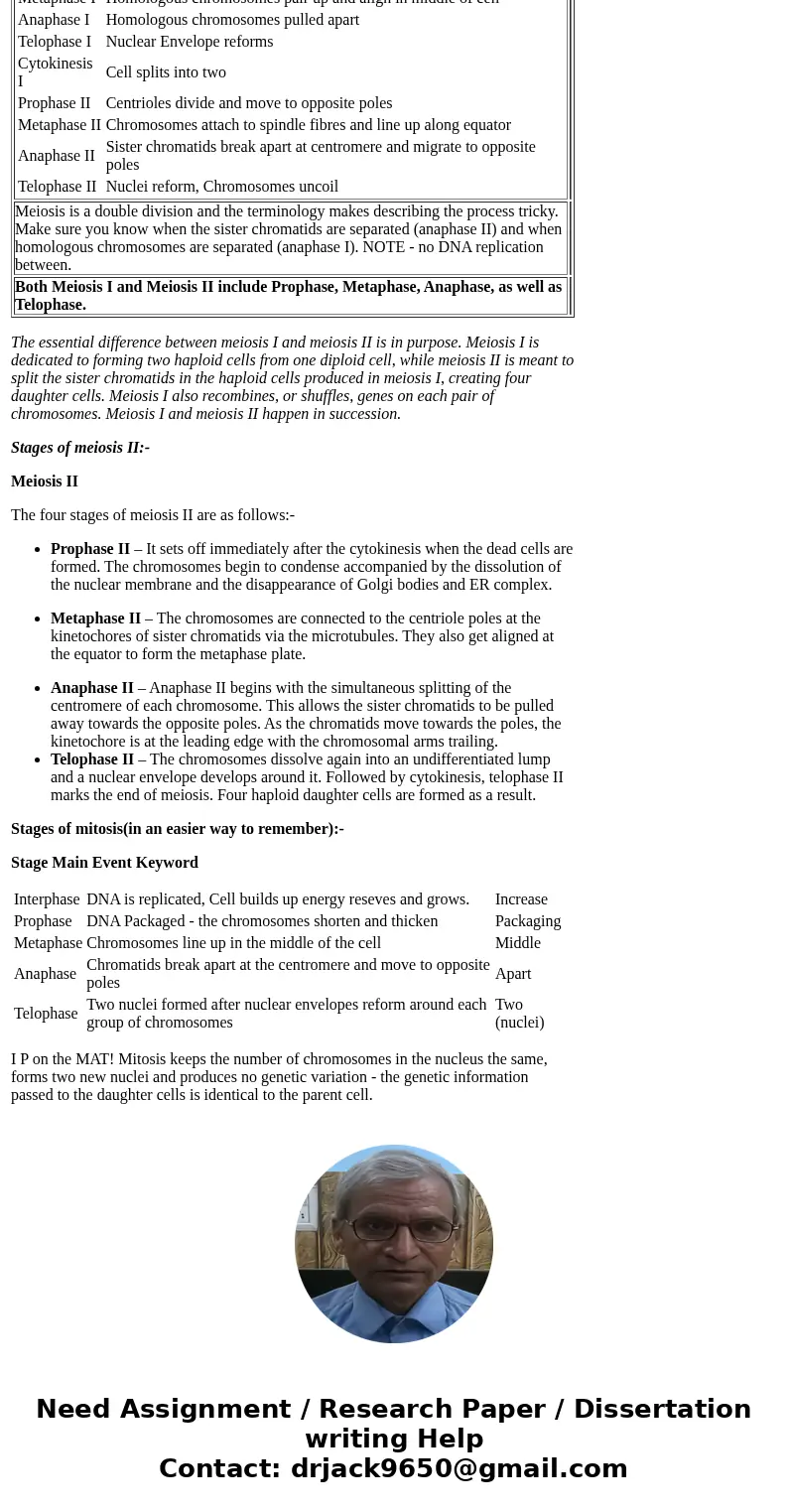1 Describe how variation in meiosis happens and why it is be
1. Describe how variation in meiosis happens and why it is beneficial? Steps and functions of mitosis and meiosis? ( I am having a hard time with defining each step in mitosis and meiosis. There is meiosis I and II and I get confused on the steps with functions. Any ideas how I can remember?)
TIA :)
Solution
Explanation:-
Variation in meiosis:-
During meiosis in humans, 1 diploid cell (with 46 chromosomes or 23 pairs) undergoes 2 cycles of cell division but only 1 round of DNA replication. The result is 4 haploidHaving one copy of each chromosome, or having a single set of chromosomes. Gametes (egg and sperm cells) are haploid. daughter cells known as gametes or egg and sperm cells (each with 23 chromosomes – 1 from each pair in the diploid cell).
At conception, an egg cell and a sperm cell combine to form a zygote (46 chromosomes or 23 pairs). This is the 1st cell of a new individual. The halving of the number of chromosomes in gametes ensures that zygotes have the same number of chromosomes from one generation to the next. This is critical for stable sexual reproduction through successive generations.
Benefits of Meiosis:-
1. New Cell Generation-
The chromosomes created during meiosis are composed of 50% copies of the parent cell and 50% new cells. ‘Â These new cells are produced during the cross-over stages of the cell division process. ‘Â During this stage half of the genetic material from the parent cell is copied into the new cells, with the other half having distinct properties and characteristics.
2. DNA Replication
The process of meiosis involves copying or replication of genetic material from the parent cell into the new cells. ‘Â As much as half of the genetic properties of the parent cell are copied into the newly-created cells. ‘Â When applied to humans for example, DNA from both parents will partly be copied onto the cells of their offspring. ‘Â When DNA is copied or replicated, the offspring will also have similar qualities with either or both of his/her parents.
3. Genetic Variation
With meiosis, only half of the genetic material is replicated into the new cells. ‘Â This simply means that the remaining half will be composed of unique genetic properties making each cell different from the other. ‘Â Through this process, humans for example will all have different genetic material and structure.
With the process involved in meiosis, humans are able to reproduce similar yet distinct offspring. ‘Â The whole process basically explains the fact that babies may share some genetic traits from their parents but they will also have unique sets of personalities because of their unique genetic composition.
Meiosis Stages:-
Prophase I
Chromosomes condense, Crossing over occurs
Metaphase I
Homologous chromosomes pair up and align in middle of cell
Anaphase I
Homologous chromosomes pulled apart
Telophase I
Nuclear Envelope reforms
Cytokinesis I
Cell splits into two
Prophase II
Centrioles divide and move to opposite poles
Metaphase II
Chromosomes attach to spindle fibres and line up along equator
Anaphase II
Sister chromatids break apart at centromere and migrate to opposite poles
Telophase II
Nuclei reform, Chromosomes uncoil
The essential difference between meiosis I and meiosis II is in purpose. Meiosis I is dedicated to forming two haploid cells from one diploid cell, while meiosis II is meant to split the sister chromatids in the haploid cells produced in meiosis I, creating four daughter cells. Meiosis I also recombines, or shuffles, genes on each pair of chromosomes. Meiosis I and meiosis II happen in succession.
Stages of meiosis II:-
Meiosis II
The four stages of meiosis II are as follows:-
Stages of mitosis(in an easier way to remember):-
Stage Main Event Keyword
Interphase
DNA is replicated, Cell builds up energy reseves and grows.
Increase
Prophase
DNA Packaged - the chromosomes shorten and thicken
Packaging
Metaphase
Chromosomes line up in the middle of the cell
Anaphase
Chromatids break apart at the centromere and move to opposite poles
Apart
Telophase
Two nuclei formed after nuclear envelopes reform around each group of chromosomes
Two (nuclei)
I P on the MAT! Mitosis keeps the number of chromosomes in the nucleus the same, forms two new nuclei and produces no genetic variation - the genetic information passed to the daughter cells is identical to the parent cell.
| Stage Keyevent | ||||||||||||||||||||||||||||||||||||||||
|---|---|---|---|---|---|---|---|---|---|---|---|---|---|---|---|---|---|---|---|---|---|---|---|---|---|---|---|---|---|---|---|---|---|---|---|---|---|---|---|---|
The essential difference between meiosis I and meiosis II is in purpose. Meiosis I is dedicated to forming two haploid cells from one diploid cell, while meiosis II is meant to split the sister chromatids in the haploid cells produced in meiosis I, creating four daughter cells. Meiosis I also recombines, or shuffles, genes on each pair of chromosomes. Meiosis I and meiosis II happen in succession. Stages of meiosis II:- Meiosis II The four stages of meiosis II are as follows:-
Stages of mitosis(in an easier way to remember):- Stage Main Event Keyword
I P on the MAT! Mitosis keeps the number of chromosomes in the nucleus the same, forms two new nuclei and produces no genetic variation - the genetic information passed to the daughter cells is identical to the parent cell. |




 Homework Sourse
Homework Sourse